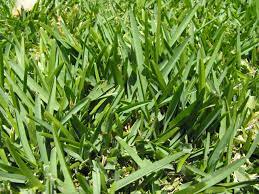Why your St. Augustine grass may not be doing well this spring
St. Augustine grass is a popular warm-season grass that is commonly used for lawns in our area.
Unfortunately, the volatility of our West Texas weather has taken a toll on the St. Augustine grass. This year, while the other grasses in my yard are lush, my St. Augustine grass is not exactly dead but it certainly is more brown than green.
There are several reasons why the St. Augustine grass may not have grown back this year.

I think that the most likely culprit in our area is winterkill.
The winter of 2021 was cold but it was wet. The moisture provided some insulation for the roots of the grass. The summer of 2022 was abnormally hot and dry. On Dec. 22-24, the temperatures were below 20 degrees with no precipitation. These conditions likely just freeze-dried our grass.
There are several steps we can take to help the grass recover:
Wait for warmer weather:
St. Augustine may not begin growing until the soil temperatures reach at least 60 degrees. We have had a cooler than normal spring. But the weather does seem to be consistently warmer with our nighttime temperatures staying above 60 degrees lately. But remember just a few weeks ago we still had nighttime temperatures in the 40s. The soil temperature has to warm up before attempting to revive the grass.
Remove debris
If your grass was damaged by cold temperatures, there may be debris, such as dead leaves and branches, covering it. Remove any debris to allow sunlight and air to reach the grass.
Water regularly
Water your grass regularly to help it recover. St. Augustine grass requires about 1 inch of water per week during the growing season. However, make sure that you are complying with your municipality’s water restrictions if any are in place.
Fertilize
Apply a fertilizer specifically formulated for St. Augustine grass. Local nurseries will be able to advise you on the best fertilizers for our area.
Mow at the appropriate height
Mow your grass at the appropriate height to encourage healthy growth. For St. Augustine grass, the recommended mowing height is 2.5 to 4 inches. Mowing too short can damage the grass and inhibit root growth.
Treat for disease and pests
If your grass was damaged by cold temperatures, it may be more susceptible to disease and pests. Monitor your grass for signs of disease or pest infestation and treat as necessary.
Overseed
If there are areas of your lawn where the St. Augustine grass did not recover, you may need to overseed with a compatible grass species. Consult with a lawn care professional or a local horticulturist to determine the best grass species to use for overseeding.
Remember, recovery from cold damage may take time. Be patient and continue to provide proper care to your St. Augustine grass to encourage healthy growth. With proper care, your grass should recover and thrive.
Masters Gardeners will offer a free education program, BCMGA Saturday Seminar, from 9 a.m.-noon May 27 at the Taylor County Extension Office Conference Room, and the topic is Pests in the Garden.
If you have any questions, call the Taylor County Extension Office at 325-672-6048 or email us at mgardeners@yahoo.com. We hope you will like us on Facebook and visit bcmgtx.org for all Big Country Master Gardener information and events.
This article originally appeared on Abilene Reporter-News: Why your St. Augustine grass may not be doing well this spring
